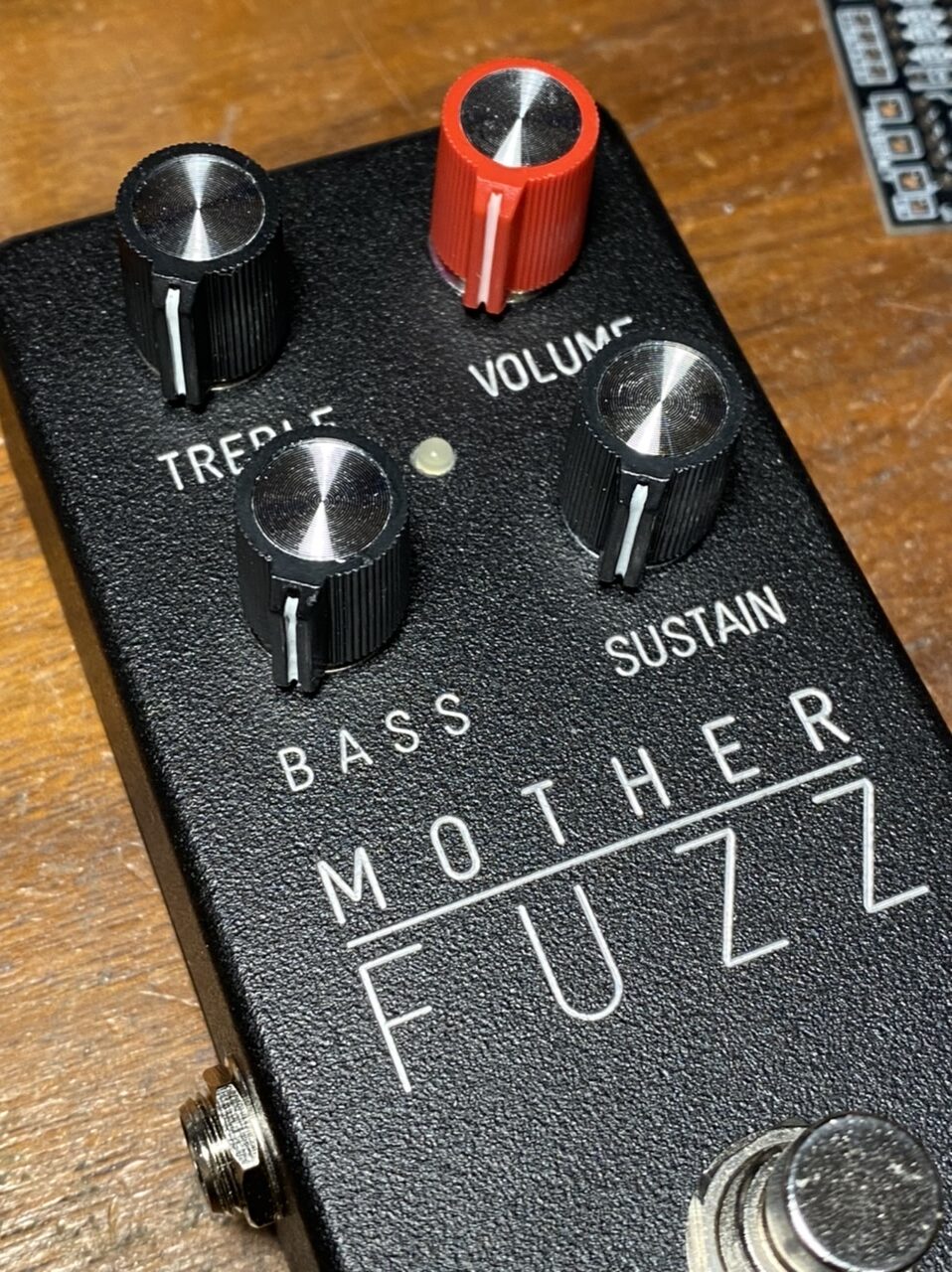This is Mic Testers Big Muff Plus. It’s a Big Muff with a JFET input and output stage, and a James control in place of the BMP tone control. The JFET input creates a higher input impedance the on the original Big Muff which prevents treble loss.
Schematic

Q1 is a high impedance input before the standard Big Muff input stage of Q2. Best practice for guitar pedals is to have ~1M input impedance. The original Big Muff has an input impedance of ~130k. The JFET used here brings that up to ~1M.
Bass and Treble pots replace the Big Muff tone control. The output stage, Q5, is a JFET. Not sure this adds anything might be better with the original BJT here.
The other parts are similar to Triangle or Rams Head Big Muff, though not the same as either of those. All of the parts between Q1 and Q5 could be replaced with values from your favorite big muff.
Making the PCB
I designed a PCB from the original schematic in Eagle. To fit this into a 1590B enclosure I used all 1/8 watt resistors. You could build this with 1/4 watt resistors if you stood them up.
I sent the design to PCBWay.com to be manufactured and had ten boards made. The boards look great!
Assembling the board
I soldered all of the parts. I like to design the board so that the LED and pots are all mounted to the PCB. This makes wiring the LED easier and more reliable. It also makes a secure place to mount the board in the enclosure. When the pots are mounted to the board there is very little off board wiring which takes a lot of time and is prone to errors.



I milled this sand textured powder coated enclosure. Big Muff seems to be the Mother of Fuzz pedals and there is the name!

I soldered the ribbon cable and 3PDT PCB to the main board before putting everything into the box.



I put everything in the box and wired the jacks and power. I leave the input and output jack wires loose. These will get wired to the 3PDT PCB later. Soldered the 3PDT PCB to the switch, last solder the input and out tip wires to the switch PCB.





Oops! The input and out jacks are not quite aligned! You can tell I drill everything by hand! I had a drill press but I eyeball the holes on the sides of the box. One day I will make a jig.
Last sign the box, close it up and add some knobs.




These knobs came from Tayda Electronics. I like Tayda, they have a good selection at great prices. The quality of some items is hit and miss. These knobs look a little cheap. The red is a little pale and the black is really a dark gray. Knobs have a big affect on your finished product! LoveMySwitches.com has better quality knobs. They cost a little more but the quality is top notch!
How does it sound? It sounds like a big muff! There are a lot of Big Muffs out there. The variety is almost endless. Everyone makes their own version or clones of various historical versions. To me they all sound the same, with some differences related to how much bass they output.
This sounds like a Big Muff but the tone control lets you dial in or out as much bass or treble as you like. I’d say this pedal covers a pretty wide range of big muff territory.
Would I recommend building this? If you like Big Muff’s, you collect them, and drink their sonic nectar like a fine wine, then you need this one in your cellar! If you need more tone control than the classic Big Muff build, build this. You can dial out the mid scoop, or add as much scoop as you like. If these things speak to you build this pedal!
If you’re not a fan of the Big Muff or have a muff that you like, this one is not going to do a lot for you, and the extra tone controls might just add complications to your life that you don’t need.

Leave a Reply